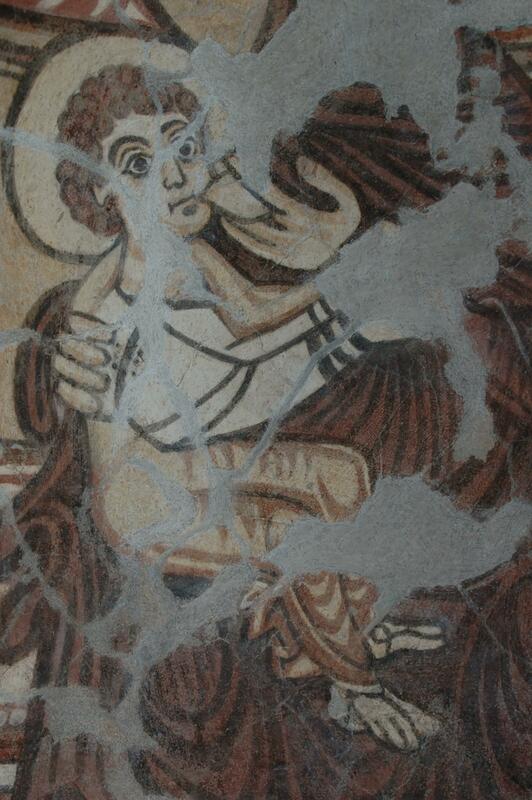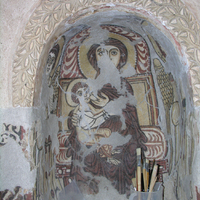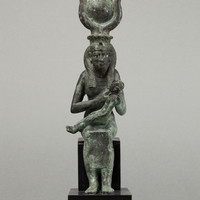Galaktotrophousa at Saqqara
Type:
Chapels,
Wall paintings
Date:
Sixth to eighth century
Location or Findspot (Modern-Day Country):
Egypt
Dimensions:
1 m high
Description:
This small painted niche now in the Coptic Museum in Cairo (inv. no. 8014) was originally on the east wall of a square chapel, cell A, in the Monastery of Apa Jeremiah at Saqqara. The subject here is Mary nursing the Christ child, called in Greek the Galaktotrophousa (She who nourishes with milk); there were at least three such images at Apa Jeremiah. The Theotokos is flanked by the archangels Michael and Gabriel and framed by pseudo-marble columns that support an arch carved with foliage in relief.
The Galaktotrophousa iconography was popular in male monasteries in Egypt. Visually, it evokes pagan images, such as the ancient Egyptian goddess Isis nursing her son Horus. Metaphorically, milk was a biblical reference to Paradise (e.g., Exod. 3:17, 13:5); newly baptized Christians in Egypt were given a cup of milk and honey between the eucharistic wine and bread. The scene emphasizes the human aspect of Christ's nature, with milk as a metaphor for the Eucharist.
Like the niche, the north and west walls of the mud-brick chapel were coated with mud and plaster and then painted with figures of saints. Two small cupboards below the niche may have housed books or implements to supplement a sixth–eighth century monk's private devotions to Christ.
The Galaktotrophousa iconography was popular in male monasteries in Egypt. Visually, it evokes pagan images, such as the ancient Egyptian goddess Isis nursing her son Horus. Metaphorically, milk was a biblical reference to Paradise (e.g., Exod. 3:17, 13:5); newly baptized Christians in Egypt were given a cup of milk and honey between the eucharistic wine and bread. The scene emphasizes the human aspect of Christ's nature, with milk as a metaphor for the Eucharist.
Like the niche, the north and west walls of the mud-brick chapel were coated with mud and plaster and then painted with figures of saints. Two small cupboards below the niche may have housed books or implements to supplement a sixth–eighth century monk's private devotions to Christ.
Relevant Textbook Chapter(s):
3
Image Credits:
Elizabeth Bolman; Heather A. Badamo



